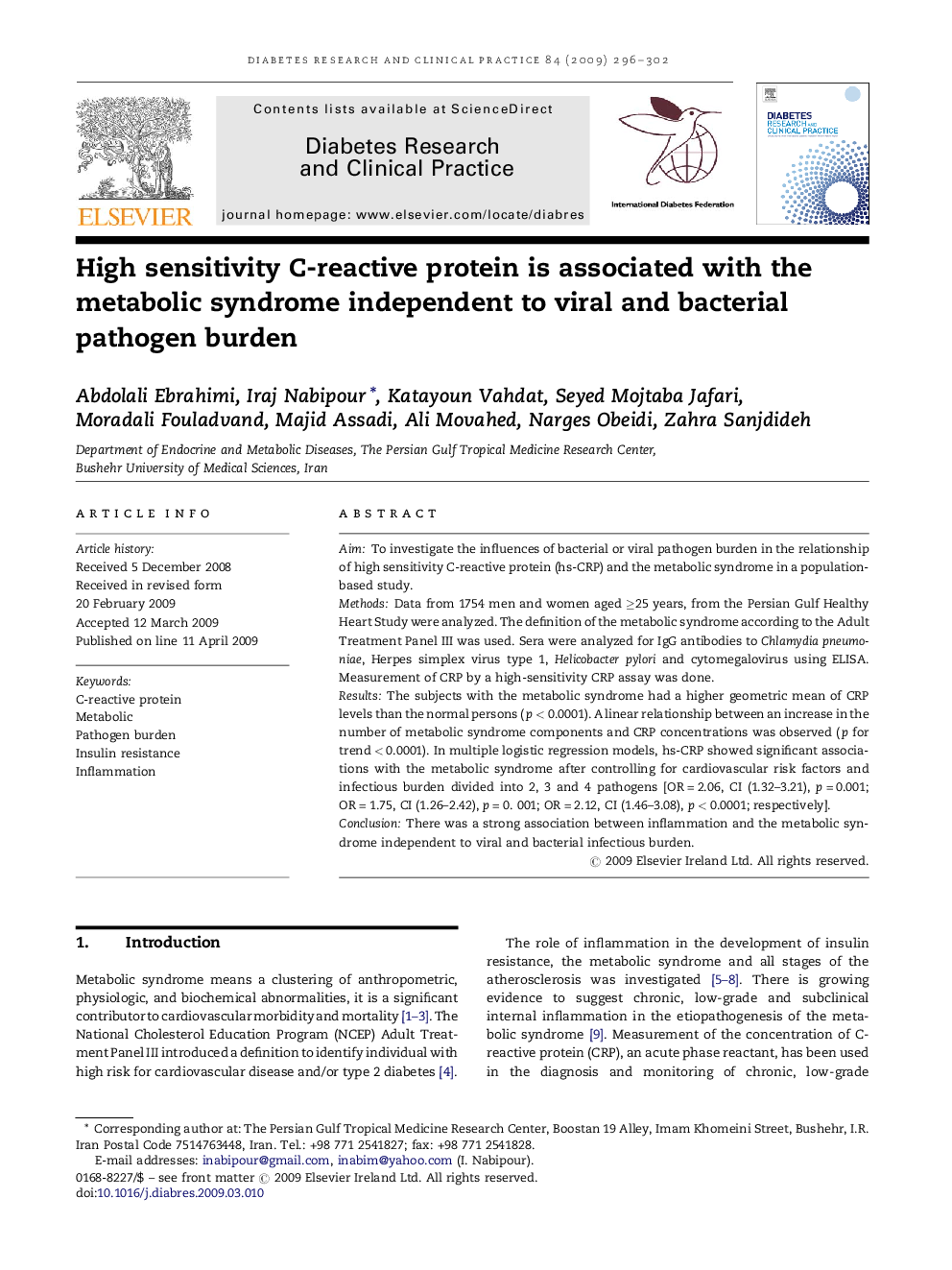| Article ID | Journal | Published Year | Pages | File Type |
|---|---|---|---|---|
| 2798046 | Diabetes Research and Clinical Practice | 2009 | 7 Pages |
AimTo investigate the influences of bacterial or viral pathogen burden in the relationship of high sensitivity C-reactive protein (hs-CRP) and the metabolic syndrome in a population-based study.MethodsData from 1754 men and women aged ≥25 years, from the Persian Gulf Healthy Heart Study were analyzed. The definition of the metabolic syndrome according to the Adult Treatment Panel III was used. Sera were analyzed for IgG antibodies to Chlamydia pneumoniae, Herpes simplex virus type 1, Helicobacter pylori and cytomegalovirus using ELISA. Measurement of CRP by a high-sensitivity CRP assay was done.ResultsThe subjects with the metabolic syndrome had a higher geometric mean of CRP levels than the normal persons (p < 0.0001). A linear relationship between an increase in the number of metabolic syndrome components and CRP concentrations was observed (p for trend < 0.0001). In multiple logistic regression models, hs-CRP showed significant associations with the metabolic syndrome after controlling for cardiovascular risk factors and infectious burden divided into 2, 3 and 4 pathogens [OR = 2.06, CI (1.32–3.21), p = 0.001; OR = 1.75, CI (1.26–2.42), p = 0. 001; OR = 2.12, CI (1.46–3.08), p < 0.0001; respectively].ConclusionThere was a strong association between inflammation and the metabolic syndrome independent to viral and bacterial infectious burden.
